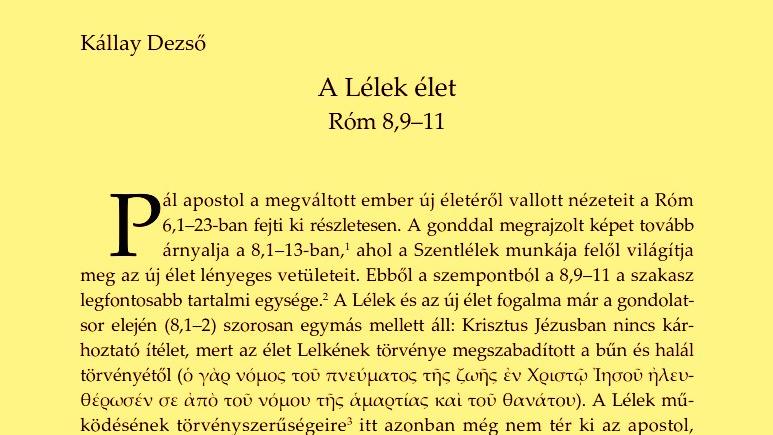A Jób 19,25–27 vizsgálata a 19–27. versek összefüggésében
Jób 19,25–27 talán a könyv legismertebb szövegrésze. Ez a perikópa számos alkalommal hangzik el temetéseken, s minden bizonnyal, a halál kérdéséről gondolkodó keresztyének is szoktak róla elmélkedni. Az itt írottak nem kívánják a hit korrekcióját végezni. Mert – rendszeres teológiai megközelítésben – a mindenkori Jób szenvedésből, bűnből, halálból való megváltója ugyanaz: a Krisztus. Ez a tanulmány nyelvészeti-poétikai vizsgálattal törekszik körvonalazni a szöveg jelentését. Egy (akár spontán) szöveg megalkotottságának mikéntje révén is üzen.
